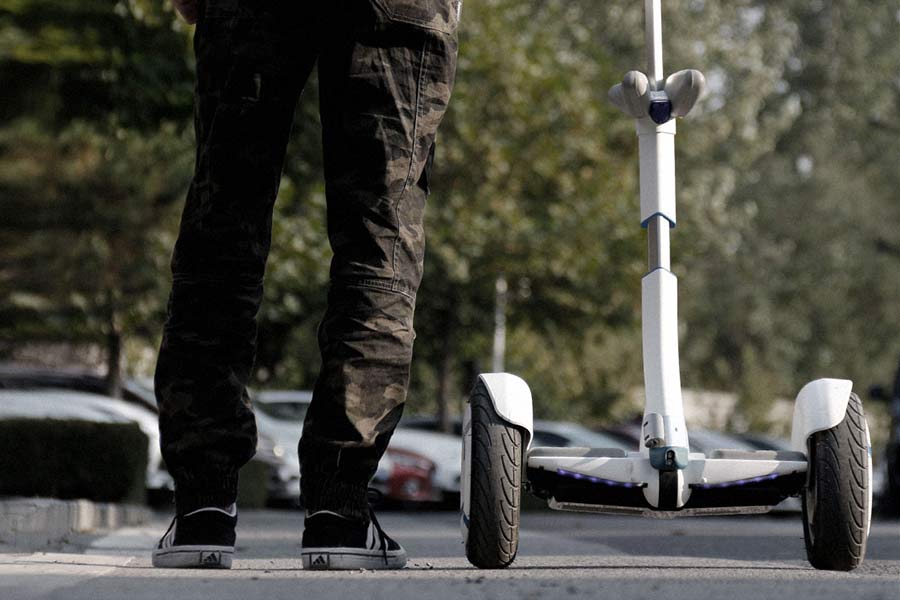
At the initiative of France, a voluntary standard will provide safety requirements for personal light electric vehicles (PLEV) in 2016. A framework dealing with their use will also be developed for these new modes of urban mobility; the Segway likes.
After e-bikes, now light electric vehicles (like electric step-scooters) and self-balancing vehicles (including single wheel transporters) are attracting the interest of consumers wanting to try such alternative modes of urban transport. These personal light electric vehicles are however put on the market without prior harmonized test methods based on shared methods. European Directives do indeed exist, but they don’t provide any specific requirements for these machines, nor do they prevent the sale of badly performing or even hazardous products.
Safety and performance guarantees
“Decathlon contacted us as early as 2013 to share this situation with us: the absence of any specific technical standard means that each manufacturer tests its products based on its own criteria,” explains Emmanuel Husson, head of this AFNOR standard development project and secretary of the European working group. “The safety and performance guarantees displayed are therefore of limited value. Decathlon has adopted a proactive approach by opting for standardization. It has agreed to share its test protocol as a basis for the work on the future European standard.”
Anticipating regulation
The safety standards development enables market players, in all their diversity, to adopt a self-regulation approach. With this voluntary standard, manufacturers are at the forefront of regulatory initiatives. Honda (via its Belgian subsidiary), Toyota (through its French presence), Egret (Germany), L-Trott (France) and Trikke (Netherlands) have properly understood this and are actively involved in the work. Representatives of public authorities (including the DGCCRF for France – Directorate General for Competition Policy, Consumer Affairs and Fraud Control) and consumers (ANEC) are also present. “These entities have very high safety requirements,” adds Emmanuel Husson.
Product safety and usage conditions
The future European standard will cover light electric vehicles without seats and self-balancing vehicles, with or without seats, intended primarily for the transportation of one person in the urban environment. This standard excludes applications coming under the health field (covered by EN ISO 13482).
A technical part will propose methods for testing the vehicle’s mechanical and electrical components. Tests on brakes, tires, battery, handlebar, the robustness of the footrest, etc. All aspects of the vehicle will be covered to ensure a minimum safety level and limit main hazards.
In and excluded
Regarding the use, the voluntary standard will exclude vehicles having a maximum speed of 25 km/h. Included are machines designed to be used in public as well as private spaces, for instance in airports, libraries or large organizations, etc. In public spaces, they are already permitted on cycle tracks and sidewalks at a maximum speed of 6 km/h. “Due to the permitted tolerance, members of the working group have anticipated a possible future regulation with the addition of a specific button to switch to pedestrian mode,” mentions Emmanuel Husson. He continues: “The vast majority of manufacturers already offer a speed regulation system that could be useful if future legislation imposes a speed limit to be respected.”
The future voluntary standard will be proposed in a public inquiry in the first quarter of 2016, prior to publication in the course of the year.
Source: Bike-eu.com
More information:






